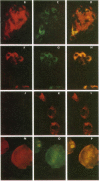Abstract
In order to investigate the coordinated synthesis of matrix components by individual chondrocytes, specific antibodies to type I collagen, type II collagen, and chondroitin sulfate proteoglycan core protein were used in simultaneous double immunofluorescence reactions. Extensive accumulation of core protein surrounding chondrocytes and the intracellular accumulation of type II collagen were observed. Extracellular core protein immunofluorescence obscured the intracellular reaction product, but the extracellular immunoreactive material could be removed by digestion with purified testicular hyaluronidase prior to fixation. Subsequent to digestion, core protein and type II collagen were observed in the same chondrocytes within discrete, sometimes identical, cytoplasmic regions, thus demonstrating the simultaneous localization of these two products characteristic of differentiating cartilage.
Full text
PDF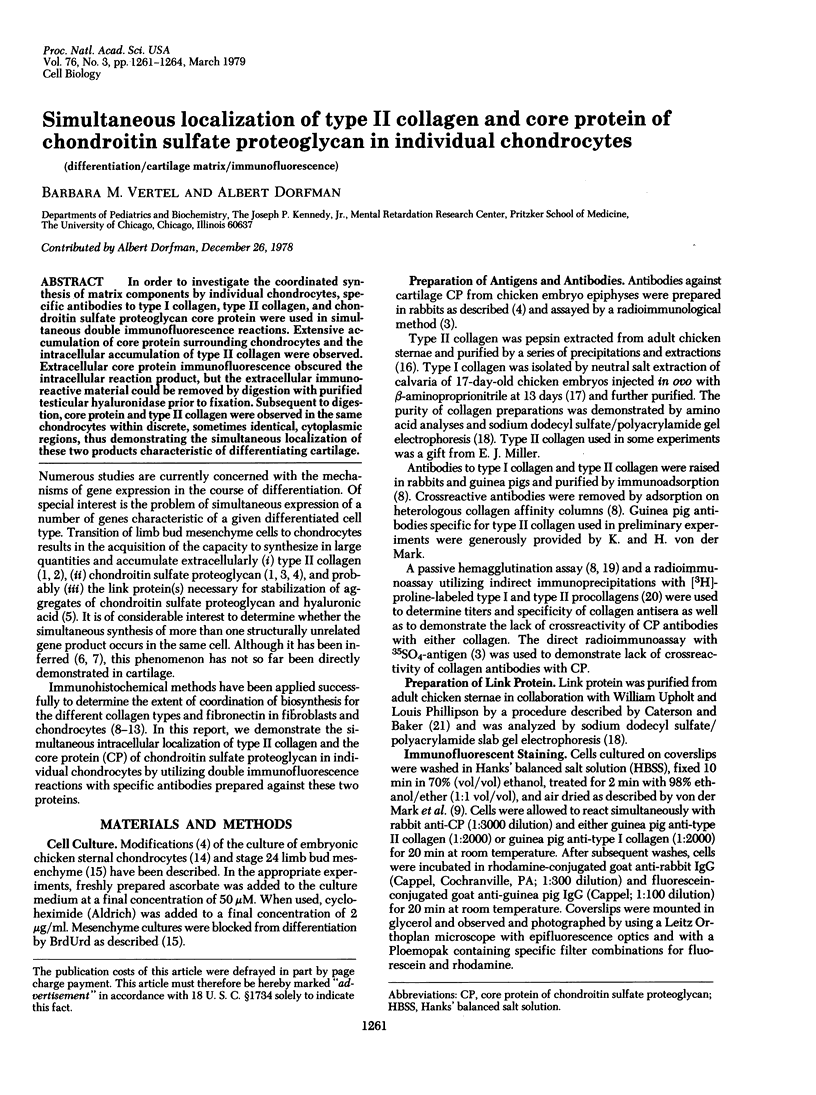
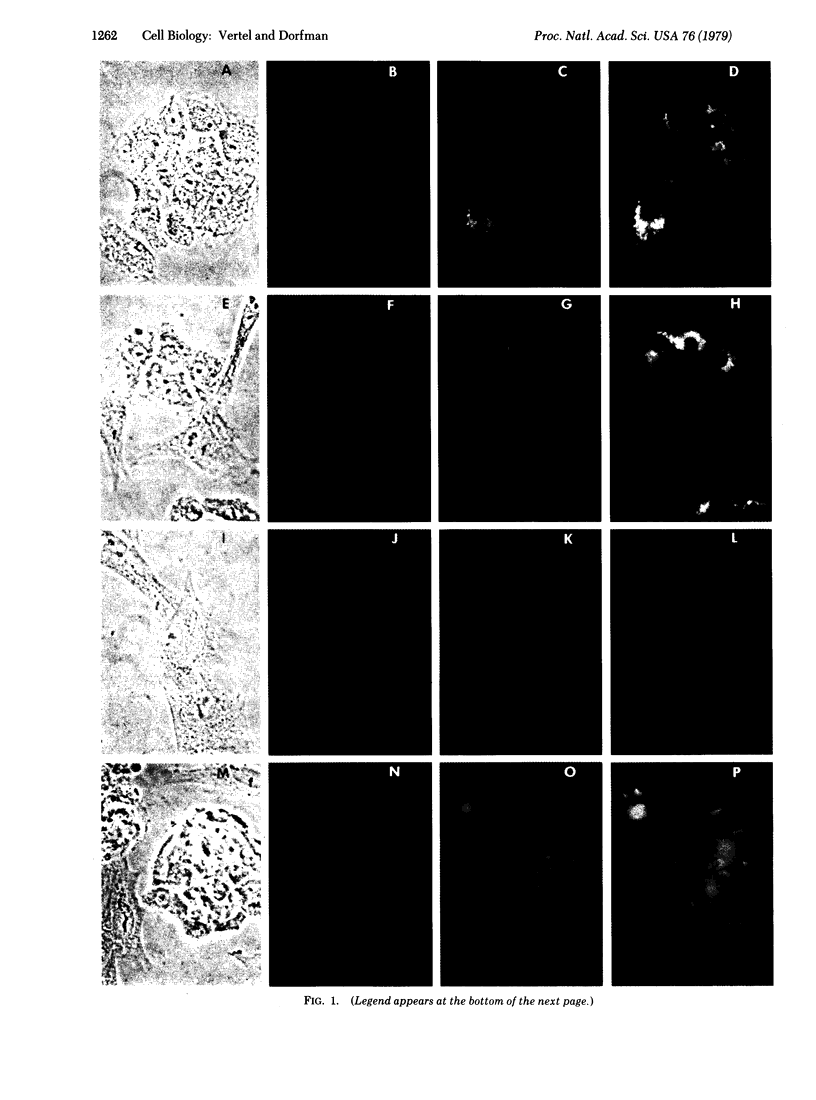
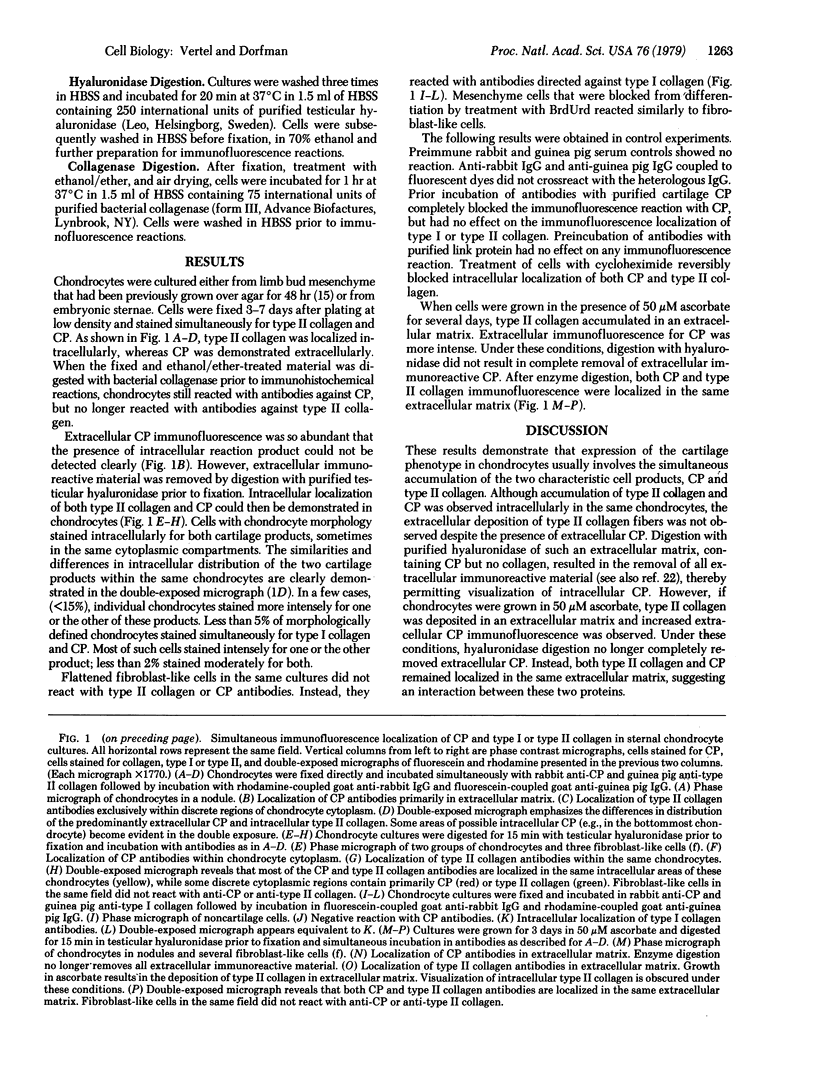
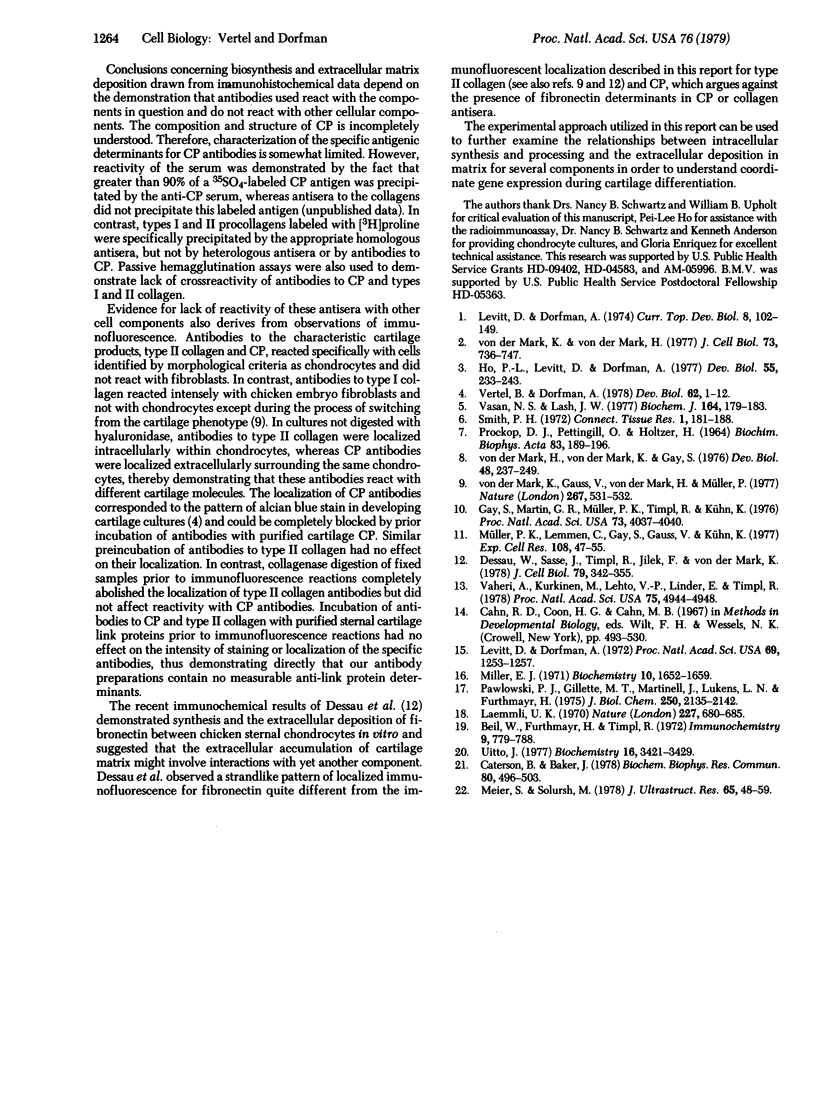
Images in this article
Selected References
These references are in PubMed. This may not be the complete list of references from this article.
- Beil W., Furthmayr H., Timpl R. Chicken antibodies to soluble rat collagen. I. Characterization of the immune response by precipitation and agglutination methods. Immunochemistry. 1972 Aug;9(8):779–788. [PubMed] [Google Scholar]
- Caterson B., Baker J. The interaction of link proteins with proteoglycan monomers in the absence of hyaluronic acid. Biochem Biophys Res Commun. 1978 Feb 14;80(3):496–503. doi: 10.1016/0006-291x(78)91596-6. [DOI] [PubMed] [Google Scholar]
- Dessau W., Sasse J., Timpl R., Jilek F., von der Mark K. Synthesis and extracellular deposition of fibronectin in chondrocyte cultures. Response to the removal of extracellular cartilage matrix. J Cell Biol. 1978 Nov;79(2 Pt 1):342–355. doi: 10.1083/jcb.79.2.342. [DOI] [PMC free article] [PubMed] [Google Scholar]
- Gay S., Martin G. R., Muller P. K., Timpl R., Kuhn K. Simultaneous synthesis of types I and III collagen by fibroblasts in culture. Proc Natl Acad Sci U S A. 1976 Nov;73(11):4037–4040. doi: 10.1073/pnas.73.11.4037. [DOI] [PMC free article] [PubMed] [Google Scholar]
- Ho P. L., Levitt D., Dorfman A. A radioimmune study of the effect of bromodeoxyuridine on the synthesis of proteoglycan by differentiating limb bud cultures. Dev Biol. 1977 Feb;55(2):233–243. doi: 10.1016/0012-1606(77)90169-5. [DOI] [PubMed] [Google Scholar]
- Laemmli U. K. Cleavage of structural proteins during the assembly of the head of bacteriophage T4. Nature. 1970 Aug 15;227(5259):680–685. doi: 10.1038/227680a0. [DOI] [PubMed] [Google Scholar]
- Levitt D., Dorfman A. Concepts and mechanisms of cartilage differentiation. Curr Top Dev Biol. 1974;8:103–149. doi: 10.1016/s0070-2153(08)60607-9. [DOI] [PubMed] [Google Scholar]
- Levitt D., Dorfman A. The irreversible inhibition of differentiation of limb-bud mesenchyme by bromodeoxyuridine. Proc Natl Acad Sci U S A. 1972 May;69(5):1253–1257. doi: 10.1073/pnas.69.5.1253. [DOI] [PMC free article] [PubMed] [Google Scholar]
- Meier S., Solursh M. Ultrastructural analysis of the effect of ascorbic acid on secretion and assembly of extracellular matrix by cultured chick embryo chondrocytes. J Ultrastruct Res. 1978 Oct;65(1):48–59. doi: 10.1016/s0022-5320(78)90021-7. [DOI] [PubMed] [Google Scholar]
- Miller E. J. Isolation and characterization of a collagen from chick cartilage containing three identical alpha chains. Biochemistry. 1971 Apr 27;10(9):1652–1659. doi: 10.1021/bi00785a024. [DOI] [PubMed] [Google Scholar]
- Müller P. K., Lemmen C., Gay S., Gauss V., Kühn K. Immunochemical and biochemical study of collagen synthesis by chondrocytes in culture. Exp Cell Res. 1977 Aug;108(1):47–55. [PubMed] [Google Scholar]
- PROCKOP D. J., PETTENGILL O., HOLTZER H. INCORPORATION OF SULFATE AND THE SYNTHESIS OF COLLAGEN BY CULTURES OF EMBRYONIC CHONDROCYTES. Biochim Biophys Acta. 1964 Jul 7;83:189–196. doi: 10.1016/0926-6526(64)90034-5. [DOI] [PubMed] [Google Scholar]
- Pawlowski P. J., Gillette M. T., Martinell J., Lukens L. N. Identification and purification of collagen-synthesizing polysomes with anti-collagen antibodies. J Biol Chem. 1975 Mar 25;250(6):2135–2142. [PubMed] [Google Scholar]
- Uitto J. Biosynthesis of type II collagen. Removal of amino-and carboxy-terminal extensions from procollagen synthesized by chick embryo cartilage cells. Biochemistry. 1977 Jul 26;16(15):3421–3429. doi: 10.1021/bi00634a020. [DOI] [PubMed] [Google Scholar]
- Vaheri A., Kurkinen M., Lehto V. P., Linder E., Timpl R. Codistribution of pericellular matrix proteins in cultured fibroblasts and loss in transformation: fibronectin and procollagen. Proc Natl Acad Sci U S A. 1978 Oct;75(10):4944–4948. doi: 10.1073/pnas.75.10.4944. [DOI] [PMC free article] [PubMed] [Google Scholar]
- Vasan N. S., Lash J. W. Heterogeneity of proteoglycans in developing chick limb cartilage. Biochem J. 1977 Apr 15;164(1):179–183. doi: 10.1042/bj1640179. [DOI] [PMC free article] [PubMed] [Google Scholar]
- Vertel B. M., Dorfman A. An immunohistochemical study of extracellular matrix formation during chondrogenesis. Dev Biol. 1978 Jan;62(1):1–12. doi: 10.1016/0012-1606(78)90088-x. [DOI] [PubMed] [Google Scholar]
- von der Mark H., von der Mark K., Gay S. Study of differential collagen synthesis during development of the chick embryo by immunofluorescence. I. Preparation of collagen type I and type II specific antibodies and their application to early stages of the chick embryo. Dev Biol. 1976 Feb;48(2):237–249. doi: 10.1016/0012-1606(76)90088-9. [DOI] [PubMed] [Google Scholar]
- von der Mark K., Gauss V., von der Mark H., Müller P. Relationship between cell shape and type of collagen synthesised as chondrocytes lose their cartilage phenotype in culture. Nature. 1977 Jun 9;267(5611):531–532. doi: 10.1038/267531a0. [DOI] [PubMed] [Google Scholar]
- von der Mark K., von der Mark H. Immunological and biochemical studies of collagen type transition during in vitro chrondrogenesis of chick limb mesodermal cells. J Cell Biol. 1977 Jun;73(3):736–747. doi: 10.1083/jcb.73.3.736. [DOI] [PMC free article] [PubMed] [Google Scholar]



